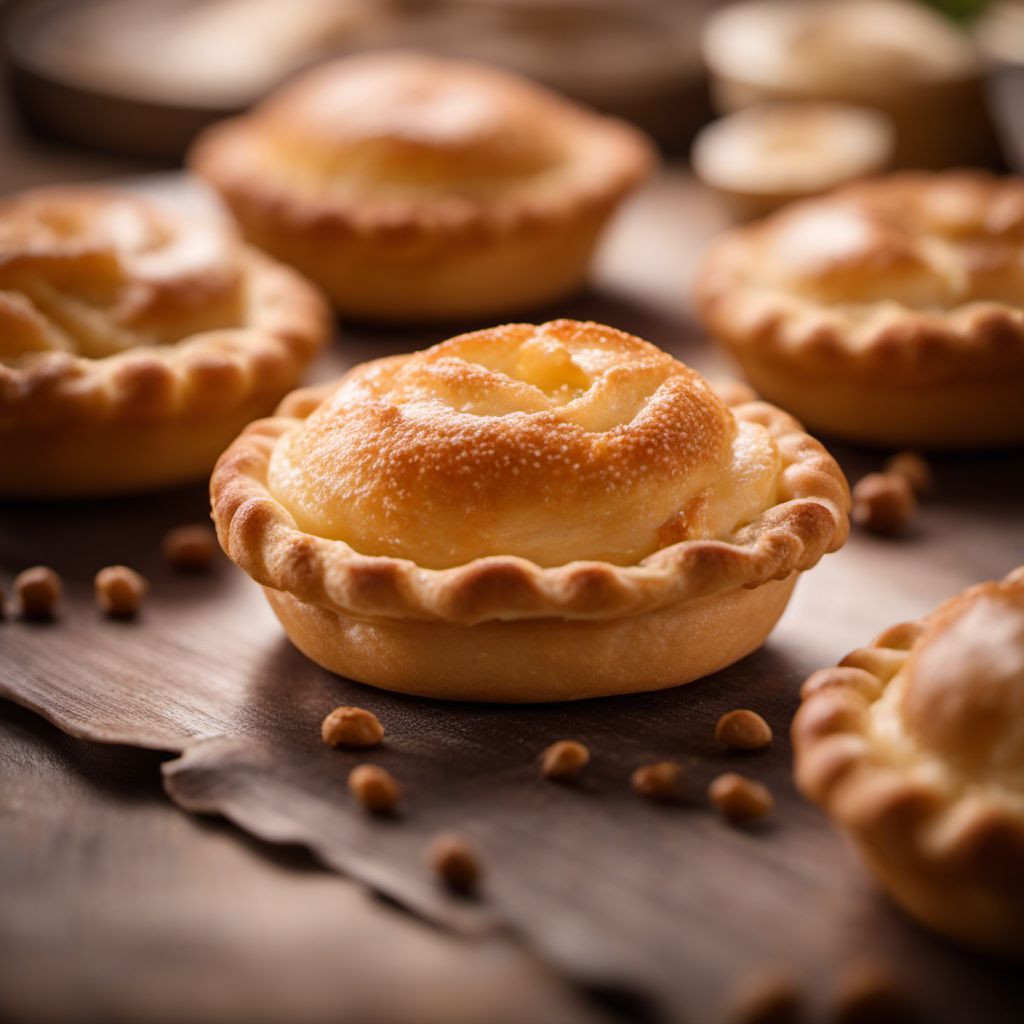
Ingredient
French pie pastry dough
Flaky Foundation for French Delights
French pie pastry dough is a delicate and buttery dough that is made by combining flour, butter, salt, and water. It has a crumbly texture and a rich, savory flavor that pairs well with both sweet and savory fillings. This versatile dough is used to create classic French pastries such as quiches, tarts, and pies.
Origins and history
The origins of French pie pastry dough can be traced back to medieval times when cooks began experimenting with different types of dough for pies and pastries. Over the centuries, French pastry chefs perfected the technique of creating a light and flaky dough, resulting in the creation of pâte brisée. Today, French pie pastry dough is a staple in French cuisine and is loved for its buttery taste and delicate texture.
Nutritional information
French pie pastry dough is primarily made from flour and butter, resulting in a dough that is relatively high in fat. It is also a good source of carbohydrates and provides a small amount of protein.
Allergens
French pie pastry dough may contain allergens such as wheat and dairy, depending on the specific recipe and ingredients used. Individuals with gluten or lactose intolerance should opt for gluten-free or dairy-free alternatives.
How to select
When selecting French pie pastry dough, look for pre-made options in the refrigerated section of grocery stores or specialty food stores. Alternatively, you can make your own dough using a simple recipe that combines flour, butter, salt, and water. The key to a successful dough is using high-quality butter and properly chilling the dough before rolling it out.
Storage recommendations
To maintain the freshness and quality of French pie pastry dough, store it in the refrigerator or freezer, depending on the expiration date and your intended use. If using store-bought dough, follow the instructions on the packaging for storage recommendations. Homemade dough should be wrapped tightly in plastic wrap or placed in an airtight container before refrigerating or freezing.
How to produce
Producing French pie pastry dough requires basic baking skills and knowledge of dough preparation techniques. Amateur cooks can follow a recipe and make their own dough at home using readily available ingredients. Practice and patience are key to achieving the desired flaky texture.
Preparation tips
Before using French pie pastry dough, allow it to thaw in the refrigerator if frozen. Once thawed, lightly flour a clean surface and roll out the dough to the desired thickness. It can be used to line tart pans, create pie crusts, or form the base for quiches and other savory dishes. Blind baking, or pre-baking the dough before adding the filling, is often necessary to achieve a crisp and fully cooked crust.
Substitutions
Puff pastry dough or shortcrust pastry dough can be used as substitutes for French pie pastry dough in certain recipes. However, keep in mind that the texture and flavor may differ. Puff pastry will result in a flakier and more buttery crust, while shortcrust pastry will be denser and crumblier.
Culinary uses
French pie pastry dough is widely used in French cuisine to create a variety of sweet and savory dishes. It is commonly used for tarts, quiches, pies, galettes, and turnovers. The delicate and buttery nature of the dough allows it to showcase the flavors of the fillings while providing a crisp and satisfying texture.
Availability
French pie pastry dough is commonly available in France and other countries with a strong French culinary influence. It can also be found in specialty food stores or gourmet markets in other regions.
More ingredients from this category
Recipes using French pie pastry dough » Browse all

North East Indian Gizzada
Spiced Coconut Tartlets: A Delightful Fusion of Flavors from North East India

Classic French Quiche Lorraine
Savory Delight: A French Quiche Lorraine Twist

Classic French Crêpes Suzette
Citrus-infused Delight: Crêpes Suzette

Quiche Provençale with a Mediterranean Twist
Sun-Kissed Delight: Mediterranean Quiche Provençale

Swiss Alpine Cheese Fondue
Melting Swiss Bliss: A Savory Journey into Swiss Alpine Cheese Fondue

Lumblija - Maltese Almond Tart
Delightful Almond Bliss: Maltese Lumblija Tart

Latvian Caramelized Onion Pie
Golden Delight: Latvian Caramelized Onion Pie

Sour Orange Pie with a Tropical Twist
Tropical Tang: A Bahamian Delight - Sour Orange Pie

Oceanic Coconut Cream Pie
Tropical Delight Coconut Cream Pie

Caribbean Apple Pie
Tropical Twist Apple Pie

Crêpes Normande with Caramelized Apples and Calvados Cream
Deliciously French: Crêpes Normande with a Twist of Calvados Cream

Macadamia Nut Pie with a Japanese Chinese Twist
Sakura Macadamia Nut Pie: A Fusion of Flavors

